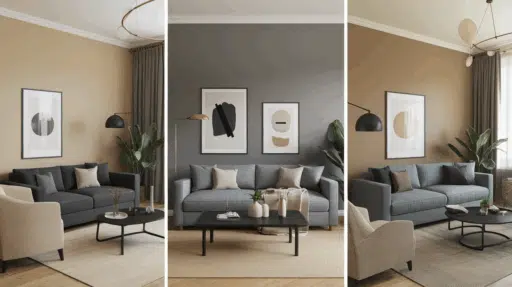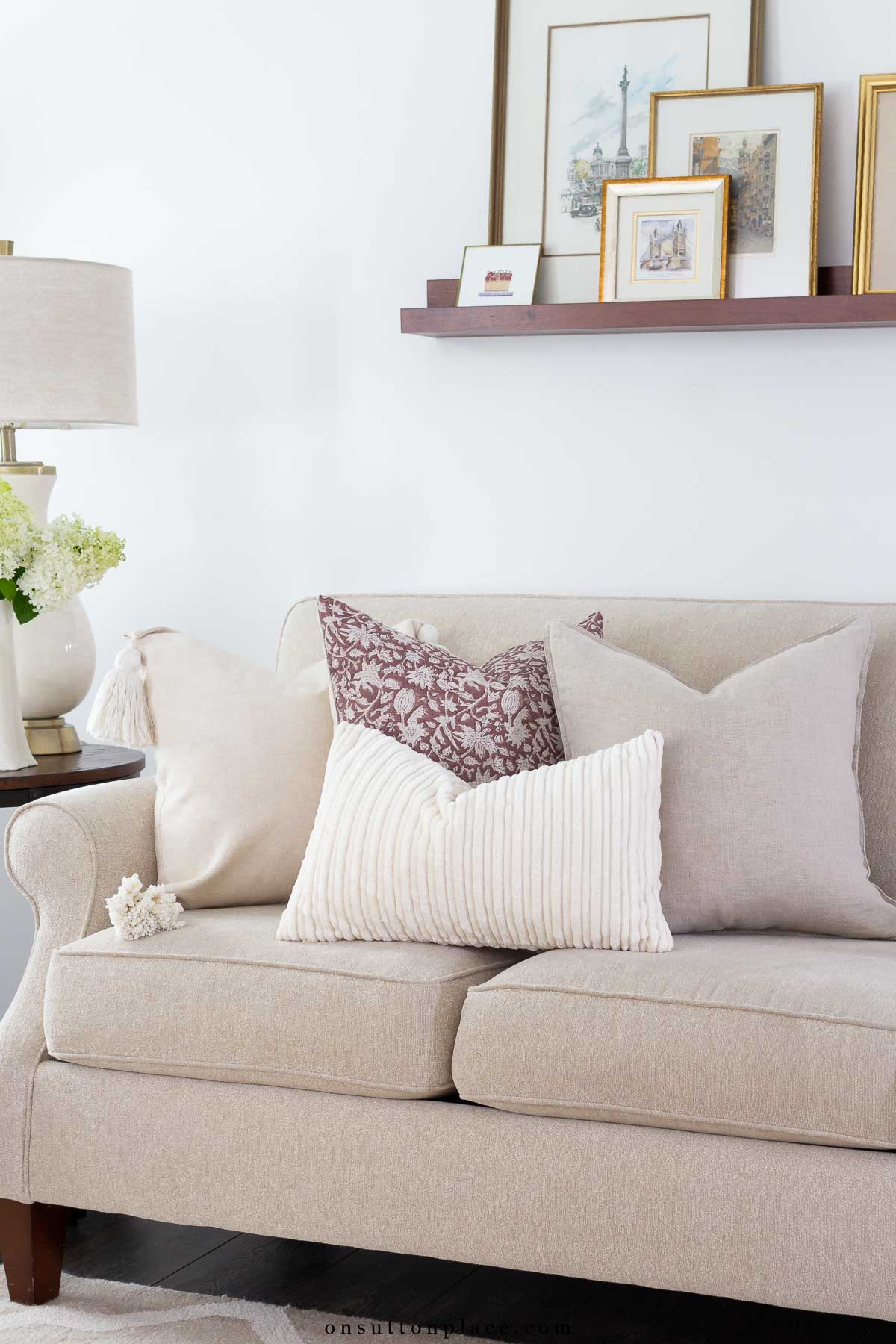Are you wondering how to match accent chairs with your sofa without making your living room look cluttered or mismatched? Finding the perfect balance between style and comfort can feel tricky, but it doesn’t have to be.
When you choose the right accent chairs to complement your sofa, you create a space that feels inviting and stylish at the same time. You’ll discover simple tips and smart ideas to help you pick accent chairs that enhance your sofa and transform your room into a cozy, beautiful haven you’ll love to show off.
Keep reading, and you’ll never have to stress about matching furniture again!
Choosing Complementary Colors
Choosing complementary colors for accent chairs and sofas enhances your living room’s look. Colors can create harmony or contrast, shaping the room’s mood. Picking the right shades helps the furniture pieces work well together. This section covers simple ideas to match colors effectively.
Using Color Wheel Principles
The color wheel shows how colors relate. Opposite colors on the wheel are complementary. For example, blue pairs well with orange. This creates a lively contrast that catches the eye. Adjacent colors blend smoothly for a calm feel. Try these combos:
- Red with green
- Yellow with purple
- Blue with orange
Use these pairs to pick accent chairs that stand out or blend with the sofa.
Balancing Bold And Neutral Shades
Bold colors add energy but can overwhelm a room. Neutral shades calm the space and balance bold tones. Combine a bright accent chair with a neutral sofa, like gray or beige. Or use a neutral chair to tone down a colorful sofa. This balance keeps the room inviting and stylish.

Credit: enthrallinggumption.com
Mixing Patterns And Textures
Mixing patterns and textures can transform your living space, making it feel dynamic and inviting. When matching accent chairs with your sofa, this approach adds depth and personality without overwhelming the room. It’s all about balance and thoughtful choices that reflect your style.
Combining Prints Without Clashing
Start by choosing a common color that appears in both your sofa and accent chairs. This shared hue acts as a visual bridge, helping different patterns work together smoothly.
Mix large-scale prints with smaller, subtle patterns to avoid visual competition. For example, if your sofa has a bold floral print, pick accent chairs with tiny geometric shapes or delicate stripes.
Ask yourself: Does this pattern complement or fight with the sofa’s design? If it feels too busy, tone it down with solid colors or neutral accessories nearby.
Incorporating Different Fabrics
Layering different fabrics adds tactile richness to your seating area. Pair smooth leather sofas with soft velvet or textured linen accent chairs to create a cozy yet sophisticated look.
Think about the room’s purpose when selecting fabrics. Durable, easy-to-clean materials work best for high-traffic areas, while plush fabrics suit quieter, relaxing spaces.
Try mixing matte and shiny finishes to catch the light in interesting ways. Your eyes will naturally move across the room, making it feel larger and more inviting.
Matching Styles And Eras
Accent chairs and sofas look best when their styles and eras complement each other. Matching colors, shapes, or materials creates a balanced and inviting space. Mixing different periods can add character but should feel intentional, not random.
Matching styles and eras can transform your living room. Accent chairs paired with sofas create a cohesive and stylish look. Mixing different styles and eras adds character to your space. Discover how to blend modern and vintage pieces seamlessly.Pairing Modern With Classic
Modern and classic styles can complement each other beautifully. A sleek, modern sofa can pair well with a classic wingback chair. This combination adds elegance and a touch of sophistication. Choose a color palette that ties the pieces together. Neutral tones work well to unify contrasting styles. Consider textures too. A plush velvet chair can soften the look of a leather sofa. Balance is key. Use modern art or a classic rug to enhance the aesthetic.Blending Vintage And Contemporary Pieces
Mixing vintage with contemporary creates a unique and inviting space. A mid-century modern chair can add charm next to a contemporary sofa. Look for pieces with similar lines or shapes. This helps in maintaining harmony. A vintage coffee table can serve as a focal point. It ties together the different eras. Ensure the furniture pieces share a common element, like color or material. This creates a seamless transition between styles. Mixing these styles brings warmth and a personal touch to your home.
Credit: www.onsuttonplace.com
Considering Scale And Proportion
Considering scale and proportion is key when matching accent chairs with your sofa. It ensures your space feels harmonious and inviting, rather than awkward or cluttered. Paying attention to these details makes your living area look thoughtfully designed and comfortable.
Selecting Chair Size Relative To Sofa
Start by comparing the size of your sofa with potential accent chairs. If your sofa is large and bulky, choose chairs that are equally substantial to avoid looking mismatched. On the other hand, pairing a petite sofa with oversized chairs can overwhelm the room.
Think about the height, width, and depth of the chairs in relation to your sofa. For example, a sofa with a low back pairs well with chairs that have similar low profiles. If your sofa has tall arms or a high back, taller chairs help create a balanced look.
Have you noticed how a tiny chair next to a sprawling sectional can feel lost? Choosing chairs that echo the sofa’s scale keeps the entire seating area connected and visually comfortable.
Arranging Furniture For Balance
Balance isn’t just about size; it’s about how your furniture interacts in the space. Arrange your sofa and chairs so they create a natural flow without crowding.
Try placing chairs at slight angles facing the sofa to encourage conversation and openness. Avoid lining everything up in a straight row, which can feel stiff and uninviting.
Consider leaving enough space between pieces for easy movement—about 18 to 24 inches is ideal. This spacing maintains comfort and prevents the room from feeling cramped.
Ask yourself: does the arrangement invite you to sit and relax, or does it feel like you’re navigating an obstacle course? Small adjustments can change the whole vibe.
Using Accent Chairs As Statement Pieces
Using accent chairs as statement pieces can instantly elevate the look of your living room. These chairs offer a chance to inject personality and style without overwhelming your existing sofa setup. Think of them as a bold punctuation mark in your seating arrangement that draws attention and sparks conversation.
Choosing Bold Colors Or Designs
Choosing an accent chair in a bold color like deep emerald green, vibrant mustard, or rich navy can make your space pop. Don’t shy away from patterns, either—a geometric or floral design can create a stunning contrast next to a neutral sofa.
Imagine pairing a sleek gray sofa with a bright red velvet chair. The chair not only adds color but also becomes a focal point that invites guests to sit and admire. Would you prefer your accent chair to blend in or stand out? Your answer helps define the mood of your room.
Highlighting Unique Shapes
Accent chairs come in all shapes—from wingback and barrel to modern sculptural designs. Choosing a chair with a unique silhouette can add an artistic element to your space.
Think about a curved, mid-century modern chair with tapered wooden legs next to a classic sofa. The contrast in shape adds interest without clashing. Have you noticed how a distinctive shape can change the feel of a room even more than color? It’s a powerful way to express your style.

Credit: belleze.com
Coordinating With Room Decor
Coordinating accent chairs with your sofa improves the overall look of your room. It creates a balanced space where furniture and decor work together. Matching elements can tie a room’s style and colors into a pleasing design. This harmony makes the space feel inviting and comfortable. Thoughtful coordination helps highlight each piece without overwhelming the room.
Matching Chairs With Rugs And Curtains
Rugs and curtains set the tone for your room’s color palette and texture. Choose accent chairs that echo these colors or patterns for a unified look. For example, if your rug has warm tones, pick chairs in similar shades or neutral colors. Avoid clashing patterns by selecting chairs with solid fabrics if your curtains are patterned.
Consider these tips:
- Pick chair fabrics that complement rug colors.
- Use curtain colors to balance bright or bold chairs.
- Match textures to create a cozy atmosphere.
Integrating Accessories For Cohesion
Accessories bring together different furniture pieces visually. Use pillows, throws, or small decor items on or near the accent chairs that share colors with your sofa. This creates a link between the two. Choose accessories that reflect the room’s style, such as modern, rustic, or classic.
Try these ideas:
- Select cushions that blend chair and sofa colors.
- Place matching lamps or side tables close to both pieces.
- Include artwork or decorative objects with shared color themes.
Practical Tips For Comfort And Function
Balancing comfort and function in your living space starts with choosing the right accent chair to match your sofa. Practical tips can help you create a cozy setup that not only looks great but also supports your daily activities. Let’s dive into how selecting materials and seating comfort can transform your room.
Selecting Durable Materials
Durability matters when you want your accent chair to last through years of use. Look for fabrics like leather, microfiber, or tightly woven polyester—they resist stains and wear better than delicate options.
Wood or metal frames often provide stronger support compared to particleboard or plastic. Think about your lifestyle—do you have kids or pets? Choosing tough materials can save you money and effort later.
Have you ever bought a chair that looked great but quickly showed scratches or stains? Avoid that frustration by testing fabric samples at home before making a decision.
Ensuring Comfortable Seating
Comfort is key if you want to actually enjoy your accent chair. Check seat depth and cushioning—too shallow or too firm can leave you uncomfortable after a short while.
Try sitting in the chair to feel how well it supports your back. A slight recline and padded armrests can make a big difference.
Remember, the chair should complement your sofa’s comfort level. If your sofa is plush, a stiff accent chair might feel out of place. Would you want your guests to experience the same comfort when they sit down?
Frequently Asked Questions
How Do I Match Accent Chairs With A Sofa Color?
Choose accent chairs in complementary or contrasting colors to your sofa. This adds visual interest while maintaining harmony. Consider the room’s overall color scheme for balance.
What Patterns Work Best With Solid Sofas?
Patterned accent chairs like stripes, florals, or geometrics work well with solid sofas. They add texture and personality without clashing.
Can I Mix Different Styles Of Chairs And Sofas?
Yes, mixing styles creates a dynamic look. Ensure they share a common color or material to maintain cohesion.
How Important Is Size When Pairing Accent Chairs With Sofas?
Size matters; chairs should be proportional to the sofa. Avoid oversized chairs that overwhelm or tiny ones that look out of place.
Conclusion
Accent chairs bring life to any sofa and room. Choose colors that blend well but also stand out. Match styles to keep a balanced and cozy feel. Play with patterns for a touch of fun and charm. Keep size in mind to avoid crowding your space.
Small changes can make a big difference in look and comfort. Enjoy mixing and matching to create your perfect living area. Your home will feel warm and inviting with the right pair.





